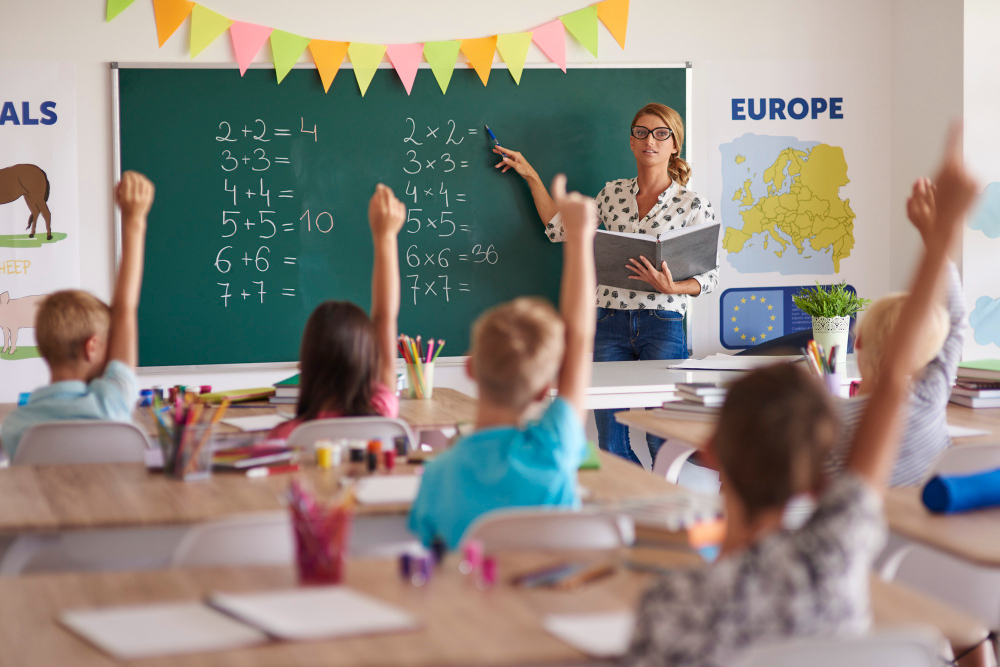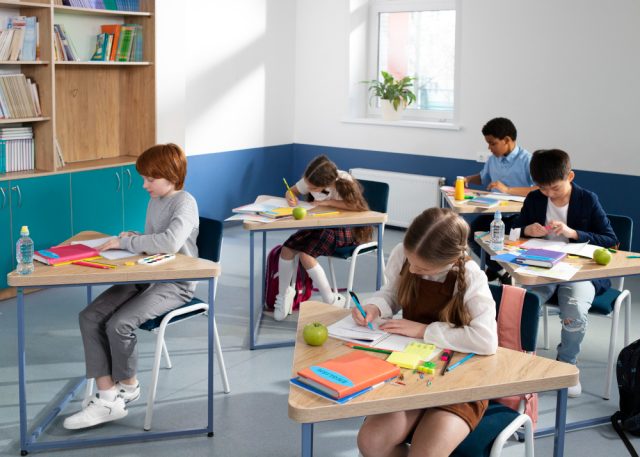As everyone can tell you, we live in a highly polarized global society. There are very few topics that nobody is arguing about, and one of them is the need for education.
Teaching the youngest generation is on the priority list of any nation, people, and government. So, if this priority is universally acknowledged as something good, why are we so bad? So, aside from securing the necessary funding, is there anything that can be done to improve education? Or is the current format the best possible, and we must push forward with what we have?
A flipped classroom may be a useful alternative to standard education, judging by some promising early results.
This model reverses the standard curricula, where students are given the info before the class and then discuss it with the teacher afterwards.
Flipped classroom
Flipping the classroom may sound anarchic to some of the most conservative among us, but it represents nothing more than the realization that we were putting the cart before the horse. It is better not to waste time memorizing and passing on information during class, and classrooms are better used in actual teaching.
Maybe this was impossible before, but nowadays, information is dirt cheap and easy to access.
Time is a resource
Time is the one true, irreplaceable resource, and it is also the easiest to waste.
Is the traditional classroom making the best use of time? Or could it be spent better?
Currently, in a traditional classroom, a teacher comes and gives students information. This can be done by lecturing, presenting slides, in the context of workshops, etc. Then, the students go home and review the notes and do their homework.
In the past, this was the ideal method due to a more low-tech environment. Books and information were jealously guarded by churches, universities, or anyone else who held that info. As a result, 80-90% of teaching was actually the task of passing down information, with the rest of the remaining time being spent on actual tutoring, mentoring, and coaching the student.
But nowadays, you can get Ivy League-tier information online. And if that info is not free, it is dirt cheap. This is why the flipped classroom model is superior, as you are paying a professional teacher for his time, to give you information that you could have googled yourself free of charge.
Similarly, a custom writing service can complement this approach by handling tasks like essay writing, allowing students to dedicate more time to engaging with the practical aspects of their studies. By outsourcing repetitive or time-consuming assignments, learners can focus on mastering problem-solving and critical thinking skills, which are central to the flipped classroom model.
Most classes, even in college, are mostly students sitting around and not participating. It is a highly ineffective way of using up the allotted time.
Passive vs active participation
Very few people are bookworms, and even fewer have high attention spans. This is why most students, and active professionals prefer to learn by doing instead of sitting around and listening.
We tend to pathologize this and diagnose everyone with ADHD. Instead, we should accept that sitting around and listening to 6 hours of lectures per day is highly unnatural and an ineffective way to learn.
Brain scans prove this fact, as it was shown that different areas of the brain light up when you are listening to vs actually doing something.
Engagement is critical, as the student has to do more than just sit around and listen. This is why millennials and Gen Z respond so well to gamification and other mechanisms designed to promote participation.
While science does back up these conclusions, simple intuition and common sense will do the same.
It doesn’t take a genius to know that if, in a conversation, only one person is talking and rambling, the other person will quickly lose patience.
The advantage of flipped classroom teaching is that it incorporates more hands-on methods such as workshops, problem-solving exercises, gamification, and many other methods.
Framing your thinking is crucial.
Aside from passivity, the retention of information is also heavily dependent on the frame.
Teachers have known this for thousands of years.
For example, in order to make a student learn better, you tell him that he has to explain to others what he has just learned. This will teach the student that just memorizing is not enough, and in order to explain to others, he must understand the content himself.
Otherwise, the objective won’t be to learn but to memorize as much data as possible to pass a test and then immediately forget. This supercharges the person’s performance, as it not only boosts memorization but also the pleasure of discovery and understanding.
Again, this trick was used by teachers for millennia. The best paper writer in the world may be able to write your essay for you and get you a good grade, but in the long term, not doing it yourself means the effort will be lost.
Practicality and application
The more you think about it, the more a flipped learning model can solve traditional problems related to learning.
One of the most common complaints is that education curricula are extremely bloated. Teachers and universities seem to just want to run out the clock for as much as possible. The more you spend in school, the more it will cost.
Indeed, the average person does 1-2 years of kindergarten, 12 years of standard education, and 4-6 years of college. After an average of 17 years of education, each of us should be a superspy astronaut poet. And yet, fresh graduates are remarkably ill-adapted to life in general.
A flipped learning model may cut down on this waste because it force-filters the information to its most practical aspects.
It’s easy to see what is useless when you actually have to put into practice, discuss, or prove it. In this regard, schools have a lot to learn from the business world.
In the business world, you can gorge yourself on all of the information and theory that you want. But at the end of the day, no one cares.
How is this going to help you? What can you use based on what you have learned?
Of course, extreme pragmatism can have its downsides as well, but we’ve veered so far in the opposite direction that education has no grounding.
Conclusion
Education is very expensive and drawn-out because we are not using it well. We hire these professionals’ called teachers and have them convey information for most of their time. However, face time with the teacher is very precious and should not be wasted by simply transferring data from one person to another.
A flipped classroom is considered a superior model because students are given the course and are expected to read up before class. Then, classroom time is used to ask questions, solve problems, participate in projects, play games, and debate outcomes.
Overall, a flipped classroom model takes students out of their comfort zone, discourages pure, contextless memorization, and makes them focus on the actionable aspects of what they are learning.

Partner Content
The above article is paid content, and any information presented should be independently verified before making any decisions as a result of the content. This article does not constitute advice of any kind, nor does it represent the opinions of the website publisher.

